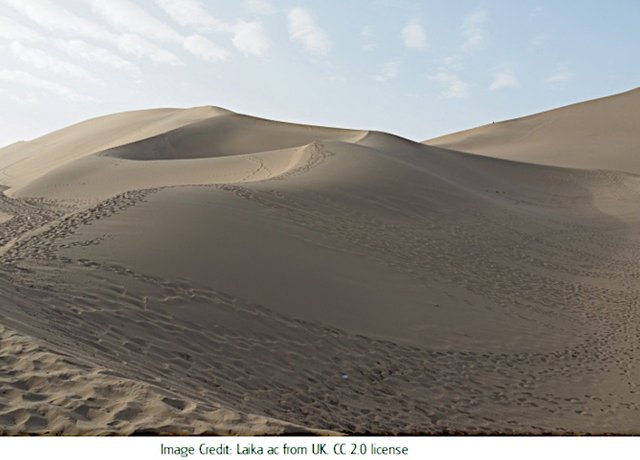Mother Huang He

Can there be a more benign, more comforting image than Mother Huang He, cradling her infant? The infant represents the birth of China's civilization. And Mother Huang He represents the Yellow River, which is called Huang He in Chinese. The river has been central to life in China for millennia. While it has given life, it has also taken life, with ferocious determination. Some of the greatest catastrophes in human history have occurred because of Yellow River flooding.
Hence, the paradoxical, alternate name for the river: China's Sorrow.
This great river---the second largest in China, sixth largest in the world--was not always yellow. It was endowed with this color by the sediment it carries, called loess. While other rivers in the world carry loess, concentrations are especially high in the Yellow River. Why?
Two researchers from Rice University reported that Yellow River loess is so fine, it offers very little physical resistance to water and is therefore carried along easily.
Hukou Waterfall, on the Yellow River
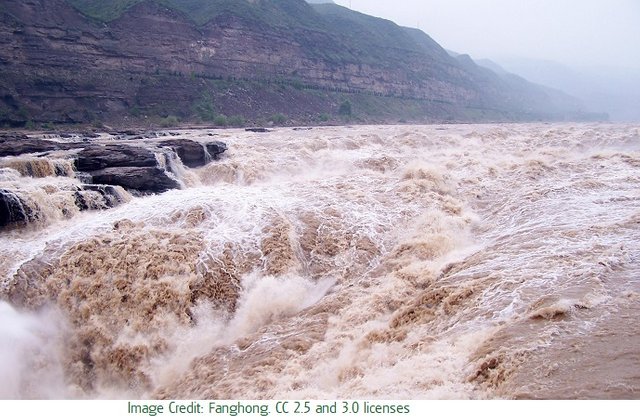
Much of this loess comes from a region in China called the Loess Plateau. Although the plateau gave rise to one of China's earliest civilizations, by the dawn of the twentieth century, people could barely scratch out a living on this 'cradle of civilization'. According to ecologists, the decline was a direct result of human activity.
The ecological degradation of the plateau occurred in stages. In ancient times fertile land was cleared for habitation and cultivation. This was the first stage. Then, farmers planted crops year after year on the same terrain. They did not understand that soil nutrients could be depleted in this way. Eventually, overuse resulted in poorer and poorer crop yields. Finally, when the land was no longer suitable for agriculture, people began to herd animals. This was the final blow to the ecology of the plateau.
Grazing animals can strip an area of vegetation. When they graze, the animals often pull up plants by the roots. As mature plants become scarce, the animals turn to immature plants. By doing so, they destroy the next generation of growth, and the earth is laid bare.
Grazing Animals Can Degrade Soil and Vegetation
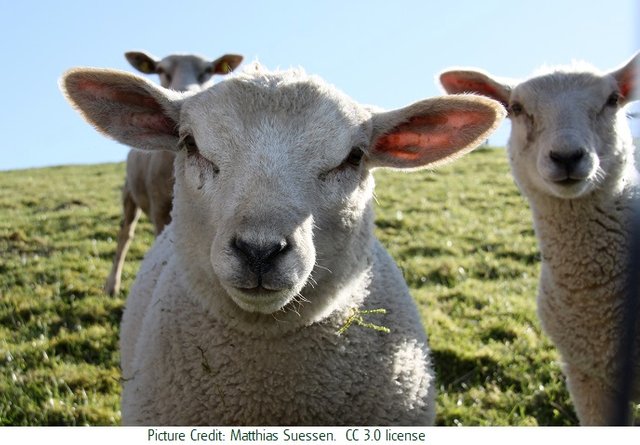
Stripping of the land through grazing rapidly advances the process of desertification. The Loess Plateau no longer had plants that could hold water. The plateau's fine, loamy silt washed away easily. Wind further eroded soil that had not been carried off by rain and runoff.
Loess Landscape, Shanxi Province, China
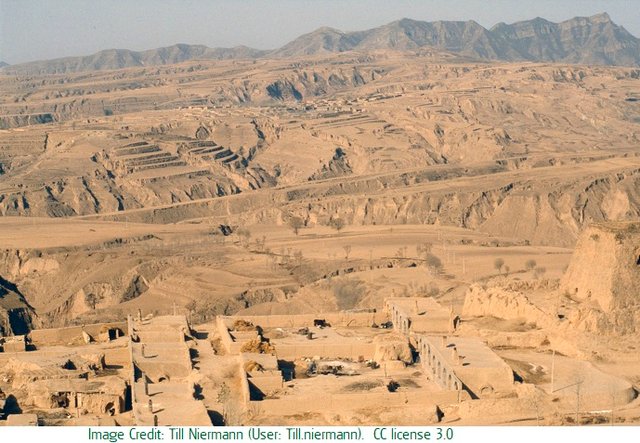
Loess May Be Found in Fertile and Barren Regions
Loess exists all over the world. It covers about 10% of the earth. It is found on windswept desserts, and also forms the basis for fertile farmland. In the absence of vegetation, fine silt particles may be carried away by the wind. In this way, it is believed, sand from the Gobi Desert traveled with the wind and settled on the Loess Pleateau.
The lack of vegetation on the Loess Plateau distinguishes it from other areas rich in loess, such as the Pampas of South America and the Danube Basin of Europe.

Regreening the Loess Plateau:Turning Back Time
If the absence of vegetation has rendered the Loess Plateau barren, can new vegetation be established, and the plateau restored? Ecologists and land use planners believe this can happen. Regreening the plateau will take a number of steps. Work has begun and is already bearing 'fruit'. The undertaking will not only benefit people who live on the plateau. It will also serve as a model for others who have suffered similar ecological damage.
Step #1: Terracing
Terraced Development
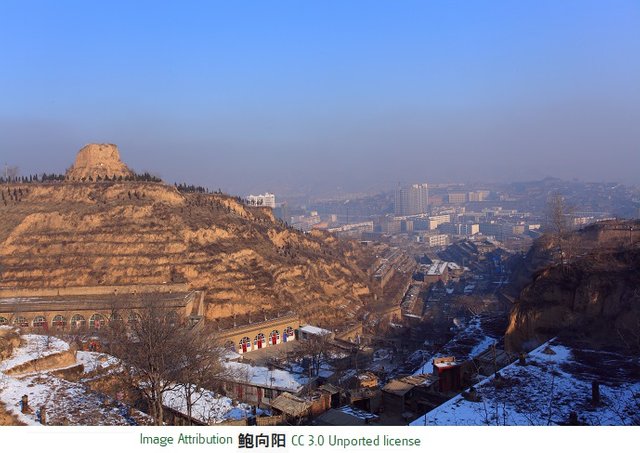
One of the first steps in regeneration is to stabilize soil and stop the runoff of silt. Terracing the land and establishing plants on each level will help to slow the flow of water, and retain soil. A benefit of terracing is that it does not require heavy machinery. As this video from the World Bank shows, the local people can do the work themselves. They can create terraces by using hand tools.
As the new plants take root, they stabilize the soil. They will not only hold water, but through transpiration, will return moisture to the atmosphere. About 10% of the water released into the atmosphere comes from plant transpiration.
Transpiration
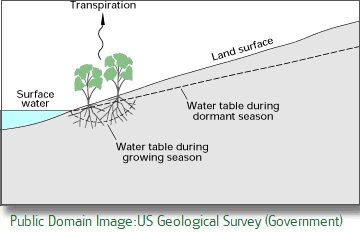
This is part of the water cycle: evaporation of water from terrestrial sources; cloud formation; rain.

Picture adapted from Jozefsu, on Wikimedia Commons: The Edge of the Loess Plateau CC 4.0 License
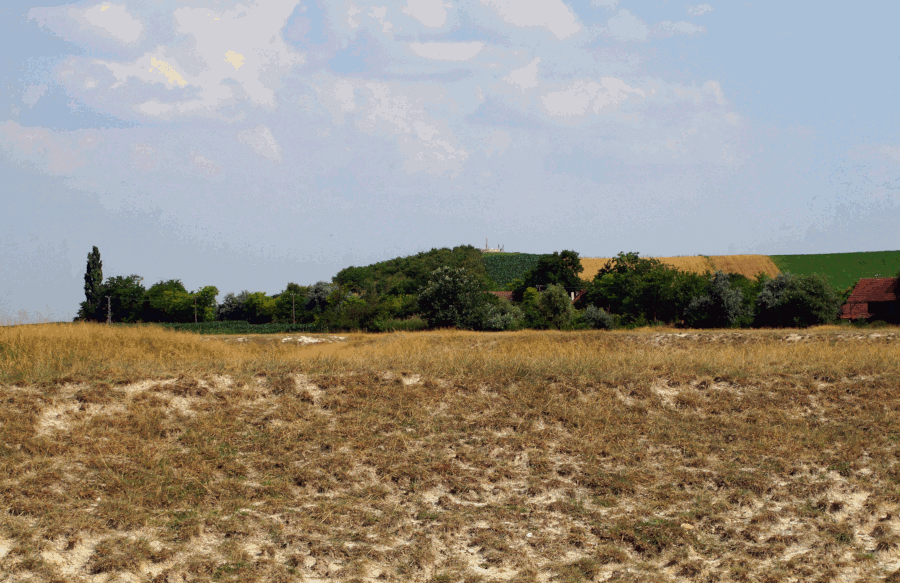
Environmentally Appropriate Vegetation
It has long been believed that the Loess Plateau was once a lush forested area. Research suggests that this may not have been the case. A pollen analysis, that looks at different geological eras, reveals that forests were not typical of the area. Rather, the plateau had a steppe-like ecology. Aforestation--the attempt to create forests on the plateau--might be doomed to failure.
Juglans (Walnut) Plant: A Good Candidate for Cultivation on the Plateau?
According to an article published in the Journal of Applied Ecology, negative consequences of aforestation are already evident. These consequences include "low tree survival rate, increased soil erosion,exacerbated water shortages and deep soil desiccation". The authors of the article suggest that selecting steppe-appropriate foliage would insure long-term ecological success. This sort of vegetation would also be the basis for a sustainable economy.
Several plant species that might be grown for profit are suggested. These include maple and walnut. Not only could these plants be marketed as food, but they also could be marketed as sources of conventional and traditional medicines. Of the many medicines mentioned in the article, two stood out for me: Paclitaxel (a cancer treatment) and artemis-inin (an anti-malarial).

Yellow River Breaches Its Course
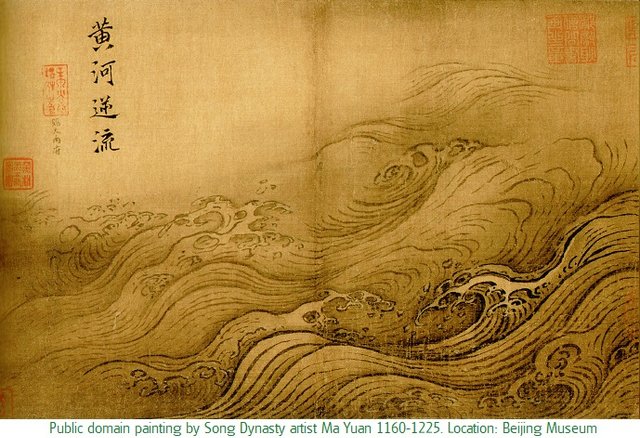
With the reestablishment of vegetation on the Loess Plateau, and the decrease in soil erosion, it is believed there will be a secondary effect: mitigation of flooding.
Yellow River flooding looms large in the collective memory of the Chinese people. The legend of the Great Flood, a multi-year inundation, has been partly supported by recent archeological finds. There is an established relationship, particularly in the Yellow River, between silt and flooding.
As silt washes into the river, it raises the river floor. The higher the floor, the more readily waters will flood over the banks if water is introduced quickly, say through heavy rainfall. Not only does the floor of river rise with silt accumulation, but natural dams also build up from silt. These dams eventually give way under pressure and the sudden release of water inundates surrounding lands.
Sometimes, the force of flooding water is so great that the course of the river changes. This has happened to the Yellow River several times over the centuries. The picture at the top of this section (Yellow River Breaches Its Course) shows just such a course change during the Song Dynasty. The picture below shows different courses the river took over the span of centuries.
Yellow River Water Course Changes
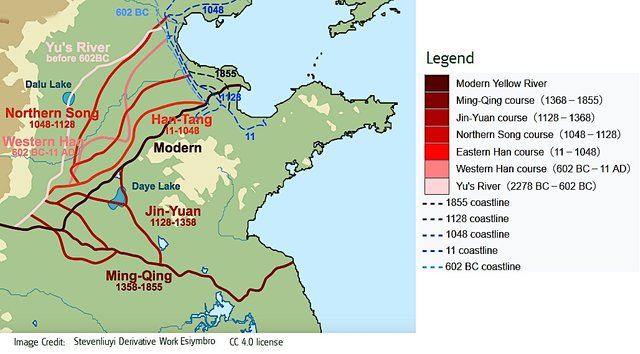
If there was less soil erosion, and less silt deposit in the river, the tendency for natural dams to develop would decrease. With less dams, there would likely be a reduced risk of catastrophic inundations. Even when humans intervene and attempt to alter the flow of the river with the construction of artificial dams, the effort tends to fail because of silt accumulation.
The Sanmenxia Dam: Flushing Silt
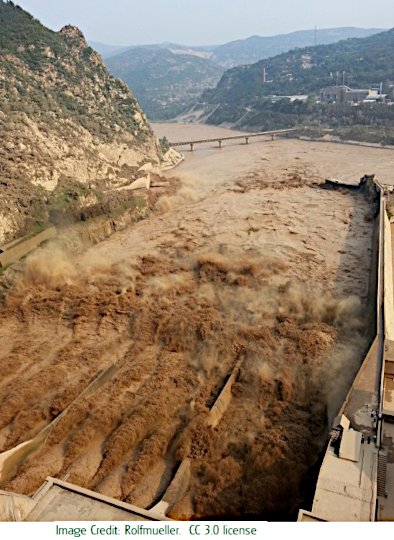
The Sanmenxia Dam, completed in 1960, encountered difficulties after construction, partly because of silt accumulation.


The story of China is, in a way, the story of its rivers. And the
story of the Loess Plateau, is, in a way, a story of the Yellow River.
It is hard to tell these stories without seeing the implications for all
of us. I hope I conveyed that relevance as I told my own version of
these stories.

Thank you for reading and spending time with me

Steem on!


Some Sources Used in Writing This Blog:
The Conversation: https://theconversation.com/confucian-thought-and-chinas-environmental-dilemmas-35585
Britannica: https://www.britannica.com/science/loess
South China Morning Post: https://www.scmp.com/news/china/society/article/2094153/why-chinas-yellow-river-so-yellow-and-why-its-prone-flooding
World Agriculture: http://www.world-agriculture.net/files/pdf/agroecosystem-management-in-arid-areas-under-climate-change-experiences-from-the-semiarid-loess-pla.pdf
Conservation Institute: https://www.conservationinstitute.org/what-is-overgrazing/
Soils Matter: https://soilsmatter.wordpress.com/2018/06/15/why-do-the-loess-hills-of-iowa-need-to-be-farmed-in-terraces/
Nature: https://www.nature.com/articles/s41598-018-37635-y
World Bank: https://www.worldbank.org/en/news/feature/2007/03/15/restoring-chinas-loess-plateau
Science Direct: https://www.sciencedirect.com/science/article/pii/S0016706113001742
US Geological Survey: https://www.usgs.gov/special-topic/water-science-school/science/evapotranspiration-and-water-cycle?qt-science_center_objects=0#qt-science_center_objects
Landscape for Life: https://landscapeforlife.org/soil/how-to-determine-soil-type/
Ravine Lands: Greening for Livelihood and Environmental Security:https://books.google.com/books?id=13ZZDwAAQBAJ&pg=PA25&lpg=PA25&dq=forested+areas+of+ancient+loess+plateau&source=bl&ots=KFM3FD60QY&sig=ACfU3U1JFfGx0SyTI31LhjZlnZW9F_hbHQ&hl=en&sa=X&ved=2ahUKEwjKpd286I3lAhVmTd8KHQ7JCxk4FBDoATABegQICRAB#v=onepage&q=forested%20areas%20of%20ancient%20loess%20plateau&f=false
Bes Journals: https://besjournals.onlinelibrary.wiley.com/doi/epdf/10.1111/1365-2664.12052
Archeology.org: https://www.archaeology.org/issues/233-1611/trenches/4914-trenches-china-xia-dynasty-flood
Jstor.org: https://www.jstor.org/stable/3060335?seq=1#page_scan_tab_content
China Dialogue: https://www.chinadialogue.net/article/show/single/en/3796-Muddy-waters
Water, Technology and Nation State: https://books.google.com/books?id=Z79aDwAAQBAJ&pg=PT373&lpg=PT373&dq=Sanmenxia+dam+engineer+imprisoned&source=bl&ots=ovuuyoRlz4&sig=ACfU3U1n3huaCZqeTp1plUa2RxgxIrR1Fg&hl=en&sa=X&ved=2ahUKEwjA3ZTbnJDlAhWqmOAKHULsC6oQ6AEwDXoECAgQAQ#v=onepage&q=Sanmenxia%20dam%20engineer%20imprisoned&f=false
NASA: https://pmm.nasa.gov/education/water-cycle
Science Direct: https://www.sciencedirect.com/science/article/pii/S1877705816319592
U Mass, Boston: http://blogs.umb.edu/buildingtheworld/waterworks/the-grand-canal-china/
Jstor: https://www.jstor.org/stable/jamewatworass.106.5.e225?seq=1#page_scan_tab_contents
Jstor: https://www.jstor.org/stable/jamewatworass.106.5.e225?seq=1#page_scan_tab_contents
The China Story: https://www.thechinastory.org/ritp/chinas-sorrow/
World Agriculture: http://www.world-agriculture.net/files/pdf/agroecosystem-management-in-arid-areas-under-climate-change-experiences-from-the-semiarid-loess-pla.pdf
